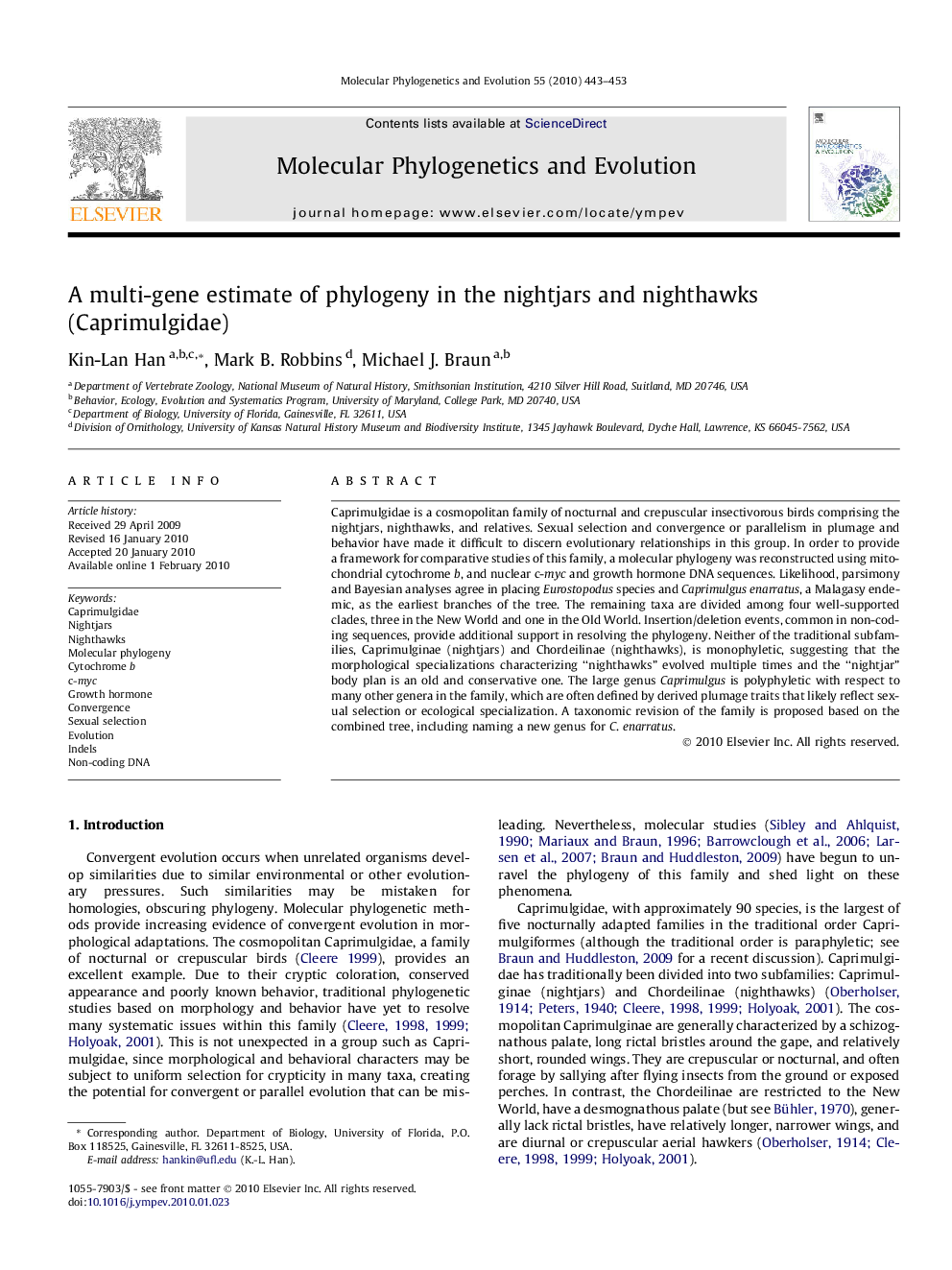| Article ID | Journal | Published Year | Pages | File Type |
|---|---|---|---|---|
| 2834757 | Molecular Phylogenetics and Evolution | 2010 | 11 Pages |
Caprimulgidae is a cosmopolitan family of nocturnal and crepuscular insectivorous birds comprising the nightjars, nighthawks, and relatives. Sexual selection and convergence or parallelism in plumage and behavior have made it difficult to discern evolutionary relationships in this group. In order to provide a framework for comparative studies of this family, a molecular phylogeny was reconstructed using mitochondrial cytochrome b, and nuclear c-myc and growth hormone DNA sequences. Likelihood, parsimony and Bayesian analyses agree in placing Eurostopodus species and Caprimulgus enarratus, a Malagasy endemic, as the earliest branches of the tree. The remaining taxa are divided among four well-supported clades, three in the New World and one in the Old World. Insertion/deletion events, common in non-coding sequences, provide additional support in resolving the phylogeny. Neither of the traditional subfamilies, Caprimulginae (nightjars) and Chordeilinae (nighthawks), is monophyletic, suggesting that the morphological specializations characterizing “nighthawks” evolved multiple times and the “nightjar” body plan is an old and conservative one. The large genus Caprimulgus is polyphyletic with respect to many other genera in the family, which are often defined by derived plumage traits that likely reflect sexual selection or ecological specialization. A taxonomic revision of the family is proposed based on the combined tree, including naming a new genus for C. enarratus.
